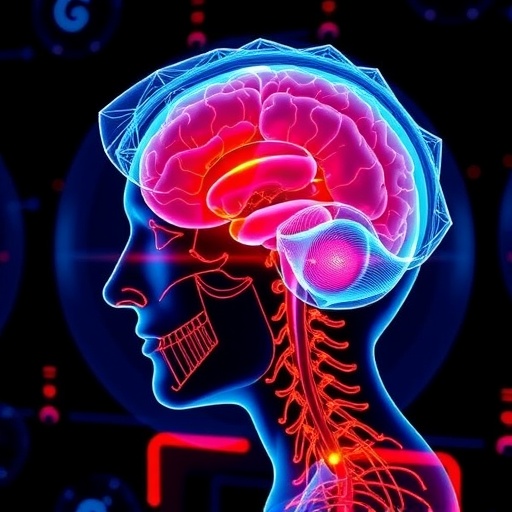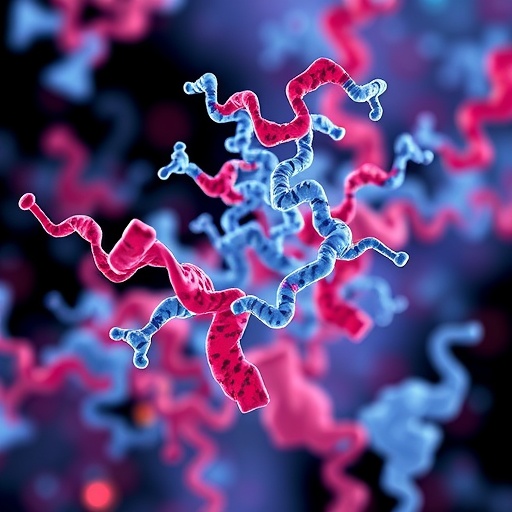Deep Brain Stimulation in Parkinson’s Disease: A Leap Toward Precision Medicine
Parkinson’s disease, a progressive neurodegenerative disorder marked primarily by motor symptoms such as tremors, rigidity, bradykinesia, and postural instability, has long challenged clinicians with its complex pathophysiology and varied patient presentation. Among therapeutic approaches, Deep Brain Stimulation (DBS) stands out as a transformative surgical intervention, offering symptom relief when pharmacological treatments yield diminishing returns. Recent advancements, however, are steering DBS beyond a one-size-fits-all therapy toward a model of precision care—where patient-specific characteristics, target selection, device technology, and stimulation programming converge to optimize clinical outcomes. A cutting-edge study published in npj Parkinson’s Disease by Wagle Shukla, Bange, and Muthuraman explores this multidimensional approach, heralding a new era in the treatment of Parkinson’s disease.
The current therapeutic landscape for Parkinson’s involves dopamine replacement strategies, chiefly levodopa administration, which although effective initially, often loses efficacy and precipitates motor complications like dyskinesias over time. Deep Brain Stimulation emerged as a powerful adjunct for patients exhibiting these pharmacoresistant symptoms. Standard DBS protocols primarily target brain nuclei implicated in motor circuitry – most notably the subthalamic nucleus (STN) and the globus pallidus internus (GPi). Yet despite surgical success, response rates and side effects vary considerably among patients, igniting interest in refining each element of the DBS process.
.adsslot_h7CxwPfuaH{ width:728px !important; height:90px !important; }
@media (max-width:1199px) { .adsslot_h7CxwPfuaH{ width:468px !important; height:60px !important; } }
@media (max-width:767px) { .adsslot_h7CxwPfuaH{ width:320px !important; height:50px !important; } }
ADVERTISEMENT
In their comprehensive investigation, Wagle Shukla and colleagues emphasize four pivotal factors for personalizing DBS therapy: patient-specific clinical features, precise neuroanatomical target selection, the choice of stimulation device with its inherent technological capabilities, and the programming paradigm applied post-implantation. Each dimension plays a deterministic role in shaping therapeutic efficacy, side effect profiles, and overall quality of life, marking the transition from generic approaches to tailored interventions.
Patient selection represents the foundational step in this evolving paradigm. Beyond traditional criteria such as disease duration, symptom profile, and levodopa responsiveness, the study advocates incorporating biomarkers, neuroimaging data, cognitive evaluations, and genetic insights to prognosticate DBS outcomes more accurately. By identifying patients most likely to benefit from stimulation—and conversely those at risk of cognitive or psychiatric sequelae—the approach fosters precision medicine, mitigating adverse effects and maximizing functional recovery.
Neuroanatomical targeting has witnessed significant refinement, enabled by advances in neuroimaging modalities including high-resolution MRI, diffusion tensor imaging (DTI), and tractography. These techniques allow surgeons to delineate intricate neural pathways and customize electrode implantation with submillimeter precision. The authors present evidence suggesting that tailored targeting optimizes modulation of the pathological neural circuitry underlying specific Parkinsonian symptoms, whether tremor, rigidity, or gait disturbances, thereby enhancing symptom control and reducing off-target stimulation reactions.
The choice of DBS hardware is undergoing a paradigm shift with the introduction of directional leads, closed-loop systems, and devices with increased channel counts enabling independent current control. These technological innovations offer unprecedented flexibility in steering stimulation fields, minimizing side effects such as dysarthria or paresthesia. Wagle Shukla et al. underscore the necessity for clinicians to integrate device capabilities within the personalized therapeutic plan, selecting technology that aligns with the patient’s anatomy, symptomatology, and progression rate.
Programming DBS post-implantation remains an art tempered increasingly by data-driven algorithms. Traditional “trial-and-error” approaches to parameter adjustments are giving way to model-based, physiology-informed strategies that consider electrode location, electrical field modeling, and symptom dynamics. The study highlights emerging software platforms integrating real-time feedback from neural signals, allowing adaptive stimulation that responds to fluctuating symptom states, a critical component advancing the DBS paradigm from static to dynamic intervention.
Crucially, the authors emphasize the interplay between these four domains rather than isolated optimization. Patient characteristics influence target selection and device suitability; device features, in turn, determine programming options and achievable outcomes. This integrative framework echoes broader trends in neuromodulation and precision medicine, advocating holistic assessment and continuous feedback loops to refine treatment iteratively.
The clinical implications of this approach are profound. Enhanced personalization promises improved symptom control, reduced stimulation-related adverse effects, and extension of DBS benefits over longer disease courses. From a health economics perspective, tailoring interventions may reduce hospitalizations, reprogramming sessions, and unsatisfactory outcomes, thereby optimizing resource allocation within increasingly burdened healthcare systems.
Underpinning this conceptual shift are advancements in computational neuroscience, neuroengineering, and bioinformatics. Sophisticated brain network models now permit simulation of DBS effects across motor and non-motor circuits. Integration of patient-specific connectomics allows targeting beyond traditional anatomical landmarks, embracing functional connectivity as a therapeutic guide. Such tools harness the burgeoning power of artificial intelligence and machine learning to decode complex disease phenotypes and response predictors effectively.
Ethical considerations also surface within this evolving landscape. Personalized DBS entails nuanced decision-making around candidacy criteria, technological access, and informed consent processes. As interventions become more complex, ensuring equitable availability and patient comprehension becomes paramount. The study urges multidisciplinary collaboration involving neurologists, neurosurgeons, neuropsychologists, and bioethicists to navigate these challenges responsibly.
Looking forward, ongoing clinical trials incorporating multimodal data streams—ranging from wearable sensors tracking gait to electrophysiological biomarkers—promise to enrich personalization strategies further. Coupled with advances in minimally invasive surgical techniques, novel stimulation waveforms, and neurofeedback systems, the future of DBS stands poised to revolutionize Parkinson’s management fundamentally.
In conclusion, the landmark work by Wagle Shukla, Bange, and Muthuraman offers a visionary blueprint for integrating patient-specific nuances, precise anatomical targeting, innovative device selection, and data-informed programming into a cohesive DBS treatment paradigm. By advancing toward precision care in Parkinson’s disease, this approach epitomizes the broader momentum within neurology to harness technological and scientific breakthroughs, transforming once-uniform therapeutics into highly individualized, adaptive interventions that restore function and dignity to patients worldwide.
Subject of Research: Personalized deep brain stimulation therapy in Parkinson’s disease, focusing on patient selection, target anatomy, device technology, and programming strategies for precision care.
Article Title: Patient, target, device, and program selection for DBS in Parkinson’s disease: advancing toward precision care.
Article References:
Wagle Shukla, A., Bange, M. & Muthuraman, M. Patient, target, device, and program selection for DBS in Parkinson’s disease: advancing toward precision care. npj Parkinsons Dis. 11, 195 (2025). https://doi.org/10.1038/s41531-025-01015-x
Image Credits: AI Generated
Tags: Advanced DBS Technology for Parkinson’sClinical Outcomes in Parkinson’s TreatmentDeep Brain Stimulation for Parkinson’sGlobus Pallidus Internus StimulationMotor Symptoms Management in Parkinson’sNeurodegenerative Disorder Treatment InnovationsPatient-Centric Parkinson’s TherapyPersonalized Approach to DBSPharmacoresistant Parkinson’s Symptomsprecision medicine in neurologySubthalamic Nucleus Targeting in DBSTailored Treatment for Parkinson’s Disease





